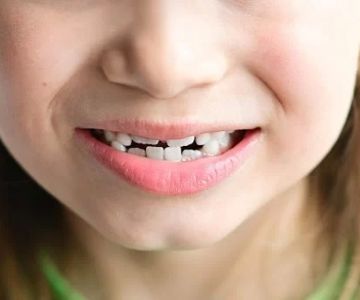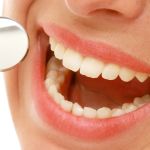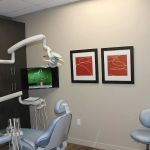
- 1 - why-regular-oral-cancer-screenings-shouldnt-be-ignored
- 2 - what-happens-during-an-oral-cancer-screening
- 3 - common-symptoms-and-risk-factors-to-watch-for
- 4 - real-case-how-a-simple-checkup-spotted-the-unthinkable
- 5 - how-often-you-should-get-screened-and-why-it-matters
- 6 - where-to-get-trusted-screenings-and-support
1. Why Regular Oral Cancer Screenings Shouldn’t Be Ignored
The importance of regular oral cancer screenings goes far beyond simple prevention. These quick, non-invasive appointments can identify abnormalities in the mouth, throat, or jaw long before you feel symptoms. And when it comes to cancer, early detection is everything. Oral cancers can grow silently and aggressively, often without pain or visible signs until it’s too late.
Most people associate dental visits with cleanings and fillings, but your dentist is also your first line of defense against oral and oropharyngeal cancer. Detecting changes in tissue texture, color, or structure can mean the difference between a simple in-office biopsy and a life-altering diagnosis.
2. What Happens During an Oral Cancer Screening?
2.1 A Thorough Visual and Physical Exam
Oral cancer screenings typically take less than 10 minutes. Your dentist will inspect your lips, gums, cheeks, tongue, throat, and even your neck for unusual lumps, white or red patches, ulcers that don’t heal, and irregular tissue textures.
2.2 Use of Diagnostic Tools
Some dental offices use special lights or dyes that highlight suspicious cells. These technologies support earlier oral cancer detection, especially in patients with elevated risk factors such as tobacco use, heavy alcohol consumption, or HPV infection.
2.3 No Pain or Invasive Procedures
There’s no drilling, needles, or discomfort involved in the process. Many patients are surprised to learn that screenings are already included in their routine dental checkup—making them one of the simplest, yet most vital tools in oral healthcare.
3. Common Symptoms and Risk Factors to Watch For
3.1 Early Signs of Oral Cancer
Recognizing the early signs of oral cancer is crucial. These may include:
- Persistent mouth sores or ulcers
- A lump or thickening in the cheek
- Difficulty swallowing or moving the jaw
- Numbness in the tongue or other parts of the mouth
- Voice changes or persistent sore throat
3.2 Who’s at Risk?
While anyone can develop oral cancer, risk increases with age, especially in men over 50. Lifestyle factors like smoking, drinking, sun exposure (for lip cancer), and a history of HPV all contribute. Even non-smokers with no symptoms can benefit from routine dental screening for cancer.
4. Real Case: How a Simple Checkup Spotted the Unthinkable
Jennifer, a 39-year-old teacher from Chicago, went in for her bi-annual cleaning at a new dental clinic. She had no symptoms—just a small white patch on the inside of her cheek she assumed was from biting herself.
Her dentist wasn’t so sure and performed a quick biopsy. Days later, it was confirmed to be early-stage squamous cell carcinoma. “I had no idea,” Jennifer recalls. “If I hadn’t switched dentists, I might’ve never caught it.” Today, Jennifer is cancer-free and a vocal advocate for the benefits of oral cancer screening.
5. How Often You Should Get Screened and Why It Matters
5.1 Standard Recommendations
Most experts recommend an oral cancer checkup at least once a year. However, if you fall into a higher risk category—due to family history, tobacco use, or other factors—screenings every 6 months are ideal. Your dentist may already include this as part of regular visits, but it’s always worth confirming.
5.2 Timing Can Save Lives
According to the Oral Cancer Foundation, the five-year survival rate for patients with early diagnosis is around 84%. That number drops significantly when the disease is caught late. Regular checkups are a small investment with potentially life-saving returns.
6. Where to Get Trusted Screenings and Support
6.1 Ask the Right Questions
When scheduling your next cleaning, ask your provider if they perform head and neck cancer screening as part of their exam. Most modern dental practices do—especially those that partner with general physicians or ENT specialists for holistic care.
6.2 Visit a Specialist If Necessary
If your dentist detects anything unusual, they may refer you to an oral surgeon or ENT specialist. Quick follow-up is critical. Most suspicious findings are benign, but timely action ensures the best outcome if something more serious is present.
6.3 Reliable Help When You Need It
If you're unsure where to start, Dentistry Toothtruth offers guidance and curated services for patients looking to take their oral health seriously. From screening tips to professional care recommendations, they help you stay informed and proactive.
Your mouth speaks volumes—make sure it stays healthy, strong, and protected for years to come.







 Towning Dental4.0 (36 review)
Towning Dental4.0 (36 review) Millennium Dental Arts5.0 (235 review)
Millennium Dental Arts5.0 (235 review) Fullerton Dental Care4.0 (59 review)
Fullerton Dental Care4.0 (59 review) Joseph Spina III, DMD4.0 (40 review)
Joseph Spina III, DMD4.0 (40 review) Dental Office0.0 (0 review)
Dental Office0.0 (0 review) Blessed Smile Dentistry of Yorba Linda4.0 (42 review)
Blessed Smile Dentistry of Yorba Linda4.0 (42 review) The Importance of Oral Health Education During Pregnancy for a Healthy Pregnancy
The Importance of Oral Health Education During Pregnancy for a Healthy Pregnancy Best Tips for Brushing Your Teeth Properly for Healthy Gums: Essential Techniques for Oral Health
Best Tips for Brushing Your Teeth Properly for Healthy Gums: Essential Techniques for Oral Health Why Skipping Dental Checkups Can Lead to Bigger Oral Health Problems
Why Skipping Dental Checkups Can Lead to Bigger Oral Health Problems Advantages of Porcelain Dental Restorations
Advantages of Porcelain Dental Restorations How Can Diabetes Cause Tooth and Gum Problems? Preventing and Managing Oral Health Issues
How Can Diabetes Cause Tooth and Gum Problems? Preventing and Managing Oral Health Issues Healthy Habits for Promoting Good Oral Health and Hygiene: Tips for a Healthy Smile
Healthy Habits for Promoting Good Oral Health and Hygiene: Tips for a Healthy Smile